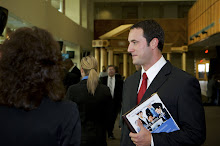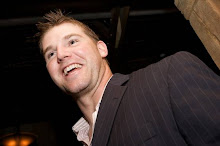The Making of a Corporate Athlete
Some executives thrive under pressure. Others wilt. Is the reason all in their heads? Hardly. Sustained high achievement demands physical and emotional strength as well as a sharp intellect. To bring mind, body, and spirit to peak condition, executives need to learn what world-class athletes already know: recovering energy is as important as expending it.
by Jim Loehr and Tony Schwartz
If there is one quality that executives seek for themselves and their employees, it is sustained high performance in the face of ever-increasing pressure and rapid change. But the source of such performance is as elusive as the fountain of youth. Management theorists have long sought to identify precisely what makes some people flourish under pressure and others fold. We maintain that they have come up with only partial answers: rich material rewards, the right culture, management by objectives.
The problem with most approaches, we believe, is that they deal with people only from the neck up, connecting high performance primarily with cognitive capacity. In recent years there has been a growing focus on the relationship between emotional intelligence and high performance. A few theorists have addressed the spiritual dimension—how deeper values and a sense of purpose influence performance. Almost no one has paid any attention to the role played by physical capacities. A successful approach to sustained high performance, we have found, must pull together all of these elements and consider the person as a whole. Thus, our integrated theory of performance management addresses the body, the emotions, the mind, and the spirit. We call this hierarchy the performance pyramid. Each of its levels profoundly influences the others, and failure to address any one of them compromises performance.
Sidebar IconThe High-Performance Pyramid
Our approach has its roots in the two decades that Jim Loehr and his colleagues at LGE spent working with world-class athletes. Several years ago, the two of us began to develop a more comprehensive version of these techniques for executives facing unprecedented demands in the workplace. In effect, we realized, these executives are “corporate athletes.” If they were to perform at high levels over the long haul, we posited, they would have to train in the same systematic, multilevel way that world-class athletes do. We have now tested our model on thousands of executives. Their dramatically improved work performance and their enhanced health and happiness confirm our initial hypothesis. In the pages that follow, we describe our approach in detail.
Ideal Performance State
In training athletes, we have never focused on their primary skills—how to hit a serve, swing a golf club, or shoot a basketball. Likewise, in business we don’t address primary competencies such as public speaking, negotiating, or analyzing a balance sheet. Our efforts aim instead to help executives build their capacity for what might be called supportive or secondary competencies, among them endurance, strength, flexibility, self-control, and focus. Increasing capacity at all levels allows athletes and executives alike to bring their talents and skills to full ignition and to sustain high performance over time—a condition we call the Ideal Performance State (IPS). Obviously, executives can perform successfully even if they smoke, drink and weigh too much, or lack emotional skills or a higher purpose for working. But they cannot perform to their full potential or without a cost over time—to themselves, to their families, and to the corporations for which they work. Put simply, the best long-term performers tap into positive energy at all levels of the performance pyramid.
Extensive research in sports science has confirmed that the capacity to mobilize energy on demand is the foundation of IPS. Our own work has demonstrated that effective energy management has two key components. The first is the rhythmic movement between energy expenditure (stress) and energy renewal (recovery), which we term “oscillation.” In the living laboratory of sports, we learned that the real enemy of high performance is not stress, which, paradoxical as it may seem, is actually the stimulus for growth. Rather, the problem is the absence of disciplined, intermittent recovery. Chronic stress without recovery depletes energy reserves, leads to burnout and breakdown, and ultimately undermines performance. Rituals that promote oscillation—rhythmic stress and recovery—are the second component of high performance. Repeated regularly, these highly precise, consciously developed routines become automatic over time.
The same methods that enable world-class athletes to reach IPS under pressure, we theorized, would be at least equally effective for business leaders—and perhaps even more important in their lives. The demands on executives to sustain high performance day in and day out, year in and year out, dwarf the challenges faced by any athlete we have ever trained. The average professional athlete, for example, spends most of his time practicing and only a small percentage—several hours a day, at most—actually competing. The typical executive, by contrast, devotes almost no time to training and must perform on demand ten, 12, 14 hours a day or more. Athletes enjoy several months of off-season, while most executives are fortunate to get three or four weeks of vacation a year. The career of the average professional athlete spans seven years; the average executive can expect to work 40 to 50 years.
Of course, even corporate athletes who train at all levels will have bad days and run into challenges they can’t overcome. Life is tough, and for many time-starved executives, it is only getting tougher. But that is precisely our point. While it isn’t always in our power to change our external conditions, we can train to better manage our inner state. We aim to help corporate athletes use the full range of their capacities to thrive in the most difficult circumstances and to emerge from stressful periods stronger, healthier, and eager for the next challenge.
Physical Capacity
Energy can be defined most simply as the capacity to do work. Our training process begins at the physical level because the body is our fundamental source of energy—the foundation of the performance pyramid. Perhaps the best paradigm for building capacity is weight lifting. Several decades of sports science research have established that the key to increasing physical strength is a phenomenon known as supercompensation—essentially the creation of balanced work-rest ratios. In weight lifting, this involves stressing a muscle to the point where its fibers literally start to break down. Given an adequate period of recovery (typically at least 48 hours), the muscle will not only heal, it will grow stronger. But persist in stressing the muscle without rest and the result will be acute and chronic damage. Conversely, failure to stress the muscle results in weakness and atrophy. (Just think of an arm in a cast for several weeks.) In both cases, the enemy is not stress, it’s linearity—the failure to oscillate between energy expenditure and recovery.
The High-Performance Pyramid
Peak performance in business has often been presented as a matter of sheer brainpower, but we view performance as a pyramid. Physical well-being is its foundation. Above that rests emotional health, then mental acuity, and at the top, a sense of purpose. The Ideal Performance State—peak performance under pressure—is achieved when all levels are working together.
Rituals that promote oscillation—the rhythmic expenditure and recovery of energy—link the levels of the pyramid. For instance, vigorous exercise can produce a sense of emotional well-being, clearing the way for peak mental performance.
check out the full story at the Harvard Business Review site:
http://www.harvardbusiness.org/hbsp/hbr/articles/article.jsp?articleID=R0101H&ml_action=get-article&pageNumber=1&ml_subscriber=true&referral=2533
Monday, August 11, 2008
Subscribe to:
Post Comments (Atom)




No comments:
Post a Comment